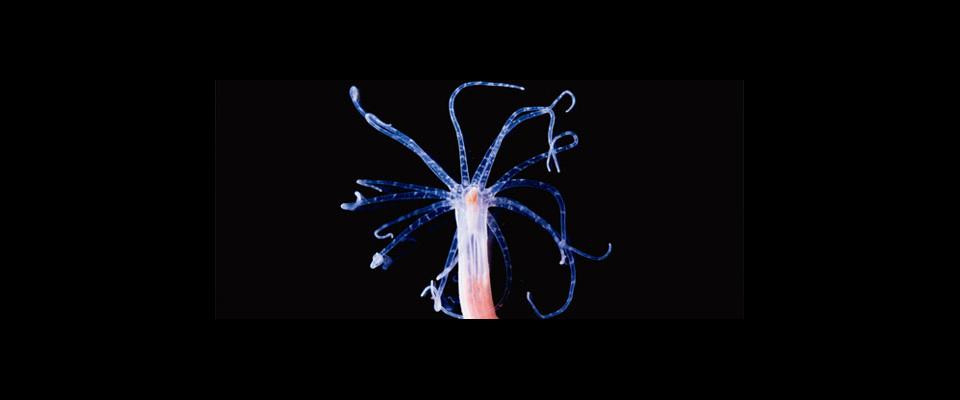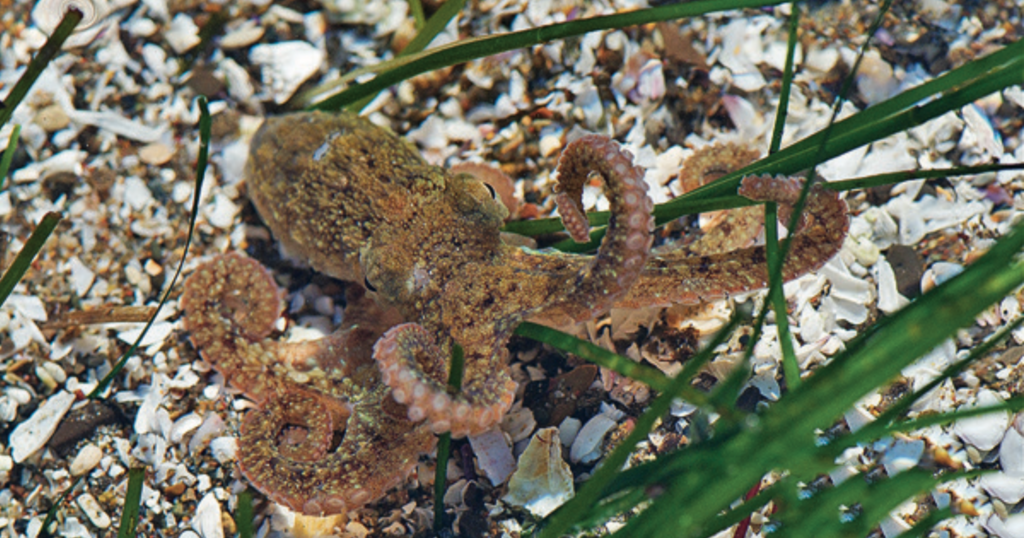I am sitting elbow on table, chin in palm, staring at what looks like a saucer of pink noodles floating in water. I poke one of the noodles with a plastic pipette. It twitches, then returns to its normal state: unmoving and seemingly lifeless. Could this marine Top Ramen, called nematostella, really have nearly all the genes that I do?
A team headed by Daniel Rokhsar, professor of genetics and development, has unraveled the nematostella genome (all the hereditary information encoded in its DNA, including genes). Their findings, published in Science, have shocked scientists across the world, raising questions about evolution as we understand it. “It was sort of an expectation that the more genes you have, the more complex an organism you can be,” says Ph.D. candidate Mansi Srivastava, one of the paper’s authors. “Sea anemones are more similar to the human genome than we ever thought.” More similar even than fruit flies or roundworms which, though not exactly running for Congress, are vastly higher up the evolutionary tree.
A gene is a group of “rungs” on the ladder-shaped DNA molecule that codes a specific instruction to the rest of the cell. For instance, sickle-cell anemia is the product of instructions from a single gene of 1,600 DNA rungs. Humans are thought to have about 20,000 genes. Fruit flies have slightly more than half that. Scientists now know that a sea anemone, basically a sack of stinging cells and cellular goo, carries about 18,000 genes, many identical to human genes. “It doesn’t even have a brain,” says Srivastava. “What is it doing with these genes?”
The anemone is just the latest in a list of animals, including rats and dogs, whose genes scientists have catalogued. As geneticists compile more genomes, they are tweaking the assumption that one gene equals one instruction, says Srivastava. Like the difference between grape juice and 1905 Bordeaux, it may be that humans simply do more with the genes they have. The way human cells receive DNA information may be more nuanced, with the cell interpreting a single set of instructions in several ways. Or, rather than a gene dictating the same instruction over and over, rungs of one gene may occasionally team up with neighboring genes.
As I suck an anemone up my pipette and squirt it out again, Srivastava says there is no doubt they are simple creatures. But studying a simple animal tells us a lot about how our own genome has developed. Anemones and their relatives were the first animals to have brain cells, and by studying them scientists can learn the roots of our own brains.
“All animals have a shared history,” says Srivastava. “It opens up the big question of what does it really mean to evolve as a multi-cellular animal?” The next logical step, she says, is to catalogue the simplest animal group (sea sponges) to learn about the origins of the whole animal kingdom.




















